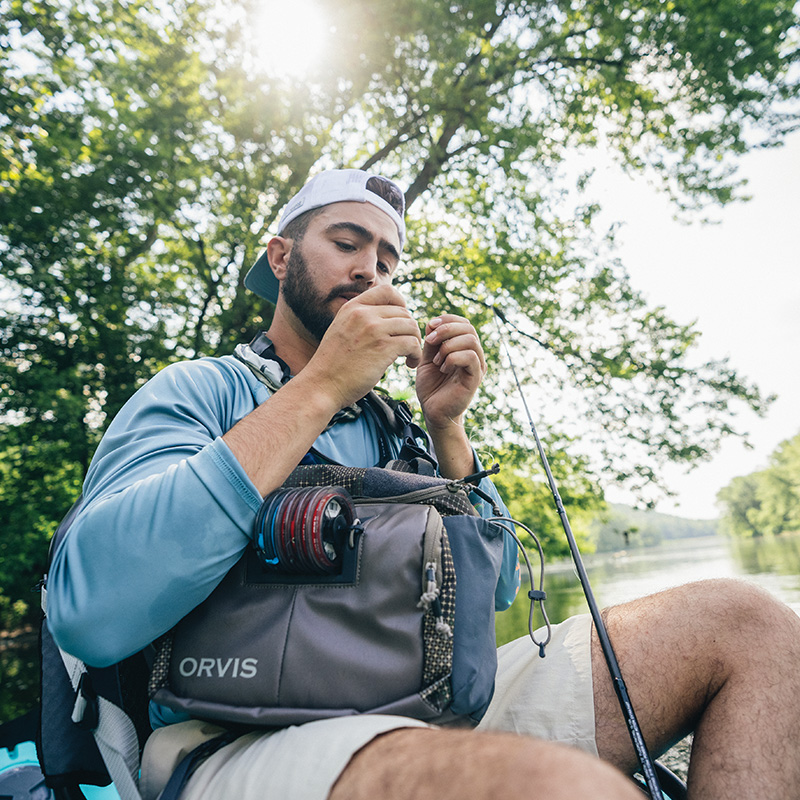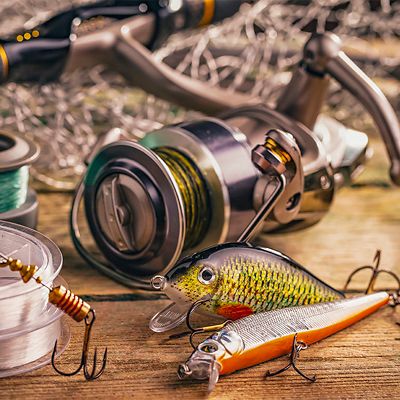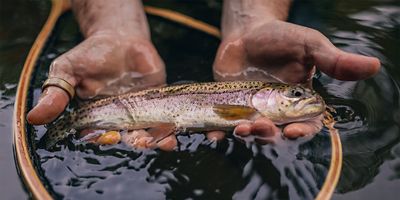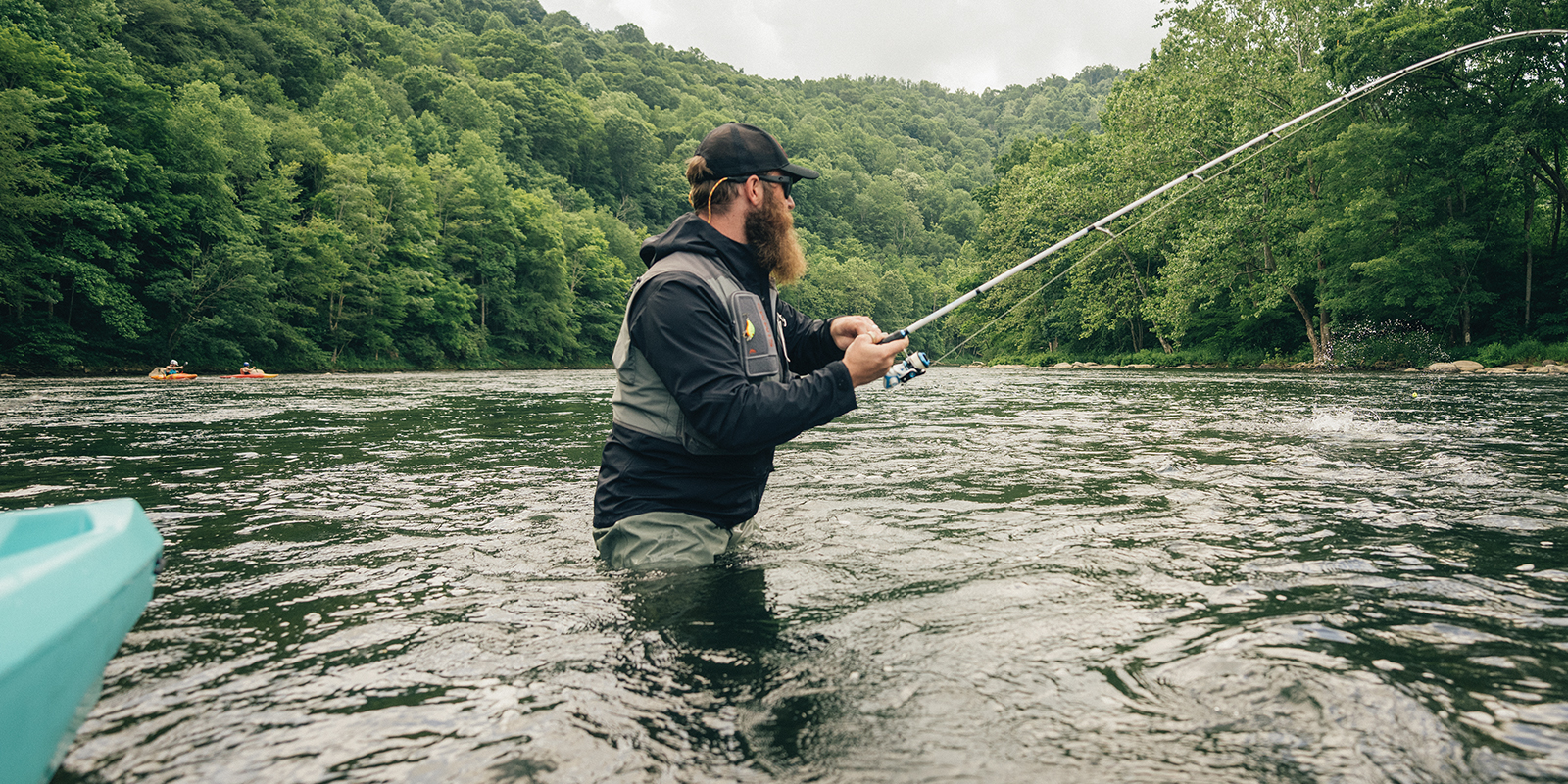Small Stream, Small Gear
Fishing a small stream, especially one in the forest, is going to be a whole lot less frustrating with gear sized to fit the water and the space you have to cast. You’re also likely not going to be catching any giants, so you can get away with a smaller rod. Downsize from your standard 9-foot, 5-weight rod to something in the ballpark of a 7-foot, 3-weight.
Similarly, you can go with a smaller leader to match your rod. Fishing creeks and streams typically yields a higher quantity of smaller, hungrier fish than it does the elusive, smart 20-incher. You can afford to be a little less delicate with less-shy fish and in rougher, louder water.
For the same reason, you can also go with simpler “attractor” flies. You don’t need to put as much effort into perfectly mimicking the bugs of that particular day. Think beadhead nymphs (which more readily fall through rough water) and durable, super buoyant dry flies. The Elk Hair Caddis is a standard small stream fly.
In addition to shrinking down the essentials, think about slimming down the overall weight of your gear for small stream fishing. Assume you’ll be doing a lot of walking and exploring to find the right spot, and pack accordingly. Instead of bringing your fully loaded hip pack or vest, just throw a couple fly boxes and the critical accessories into a backpack with your standard day-hiking kit: water, first aid, snacks, etc.
Lighter-weight waders will save you some pack weight, though you can always leave them behind, too; one of the best parts of summertime stream fishing is the excuse to cool down in the water. You’ll rarely be immersed much deeper than your knees. Plus, going without waders makes rock-hopping and exploring shorelines easier. A pair of synthetic, quick-drying shorts works well with some grippy, wet-wading shoes—ideally ones that are comfortable enough to also hike in. Otherwise, you’ll need to pack shoes and change into a dry pair of light hikers or trail runners.
Where To Look
Once you’re on the ground, look for sections of the stream with bends: That’s where you’re more likely to find deeper water. For trout, the stream typically needs to have spots with at least 2 feet of water. Rocky, boulder-choked waters often mark shallow, small streams, so while you look for the obvious pockets and pools, consider that fish could be anywhere. Logs, rocks, cut banks, shelves, seams, or anything that signals a break in the current could hold a small fish: Try everything. Staying in the same spot and varying your drift is also an easy way to try a whole bunch of spots without moving, as most of these features are closer together in small streams.
Casting in Small Streams
Tight-quarters casting can be the most frustrating part of small stream fishing. For starters, think about bringing more of the same flies than you normally would—losing a couple is part of the process. The key with casting in these confined spaces and avoiding the bushes, logs, or cliffs is being creative. Especially here, where distance is an afterthought, there’s no right or wrong way to get the fly on the water, as long as it works. The “bow and arrow” is a popular method where room for a backcast is limited: Point your rod at your target and pull back on a section of leader until you start to bend the tip of your rod, then release, slingshotting the fly forward. In a lot of these streams, you might not need to cast at all: Just hold your rod over your target and drop the fly straight down. Again, don’t expect the fish to be as picky as they might be in bigger water. As long as you can get the fly into their feeding lane, you’re giving yourself a decent shot at catching one.







